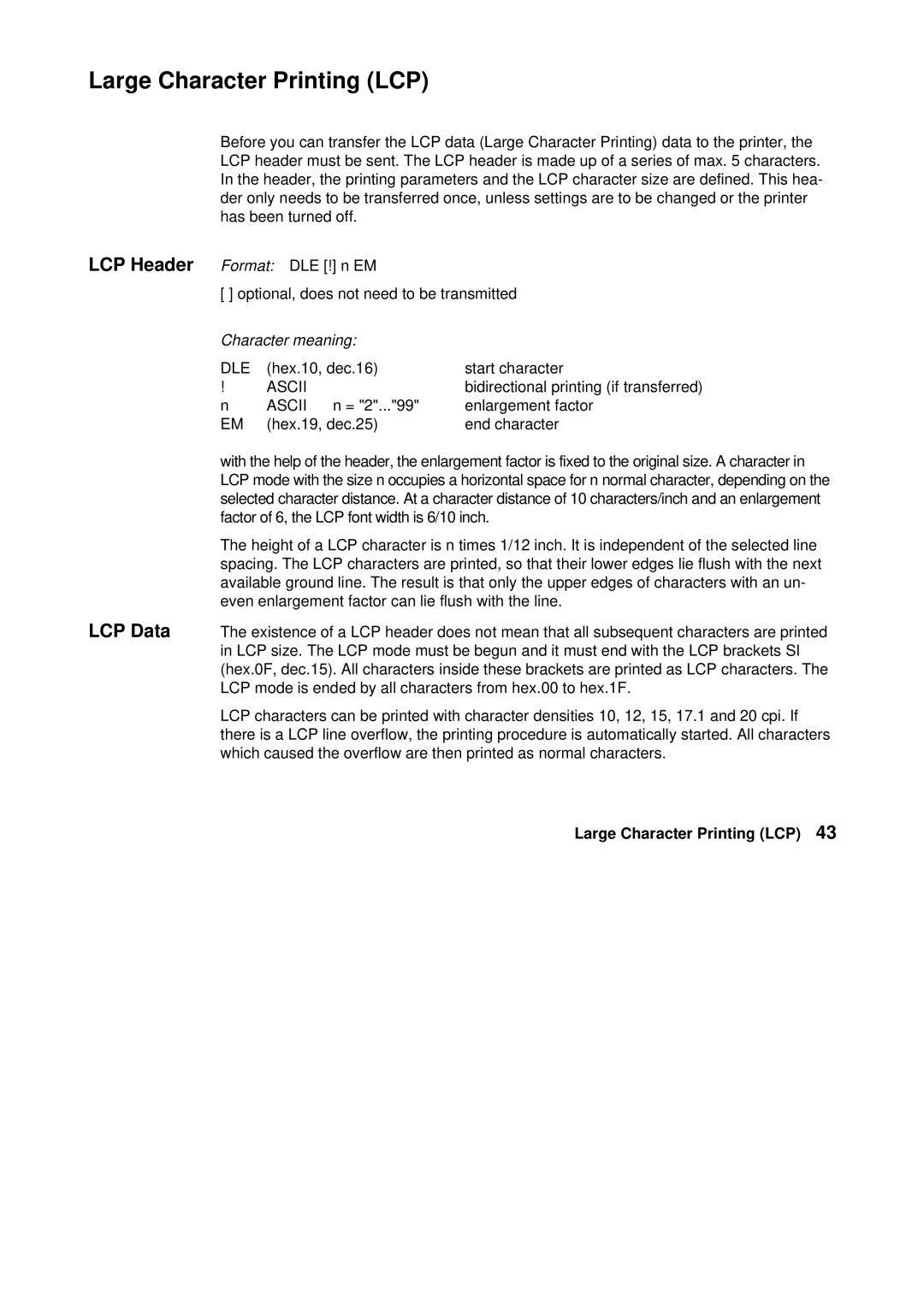Large Character Printing (LCP)
Before you can transfer the LCP data (Large Character Printing) data to the printer, the LCP header must be sent. The LCP header is made up of a series of max. 5 characters. In the header, the printing parameters and the LCP character size are defined. This hea- der only needs to be transferred once, unless settings are to be changed or the printer has been turned off.
LCP Header Format: DLE [!] n EM
[ ] optional, does not need to be transmitted
Character meaning: |
| ||
DLE | (hex.10, dec.16) | start character | |
! | ASCII |
| bidirectional printing (if transferred) |
n | ASCII | n = "2"..."99" | enlargement factor |
EM | (hex.19, dec.25) | end character | |
with the help of the header, the enlargement factor is fixed to the original size. A character in LCP mode with the size n occupies a horizontal space for n normal character, depending on the selected character distance. At a character distance of 10 characters/inch and an enlargement factor of 6, the LCP font width is 6/10 inch.
The height of a LCP character is n times 1/12 inch. It is independent of the selected line spacing. The LCP characters are printed, so that their lower edges lie flush with the next available ground line. The result is that only the upper edges of characters with an un- even enlargement factor can lie flush with the line.
LCP Data The existence of a LCP header does not mean that all subsequent characters are printed in LCP size. The LCP mode must be begun and it must end with the LCP brackets SI (hex.0F, dec.15). All characters inside these brackets are printed as LCP characters. The LCP mode is ended by all characters from hex.00 to hex.1F.
LCP characters can be printed with character densities 10, 12, 15, 17.1 and 20 cpi. If there is a LCP line overflow, the printing procedure is automatically started. All characters which caused the overflow are then printed as normal characters.
